


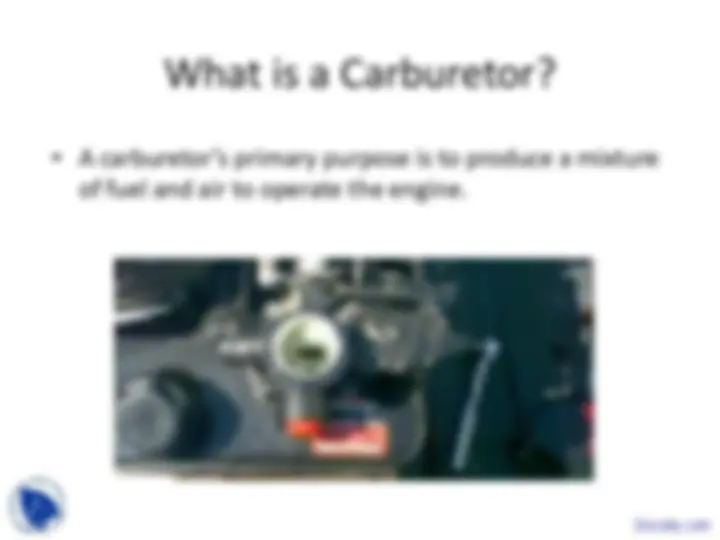
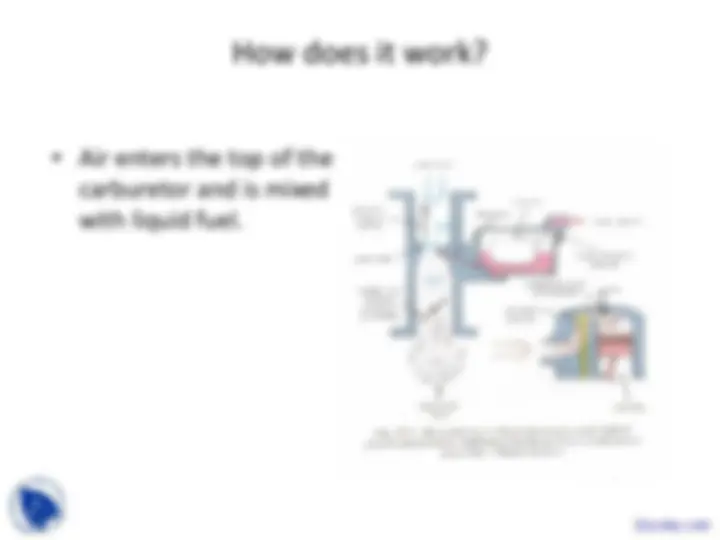
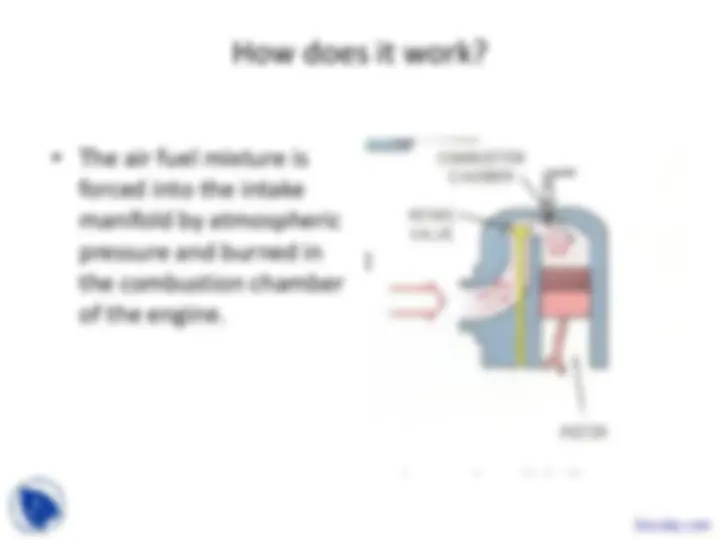
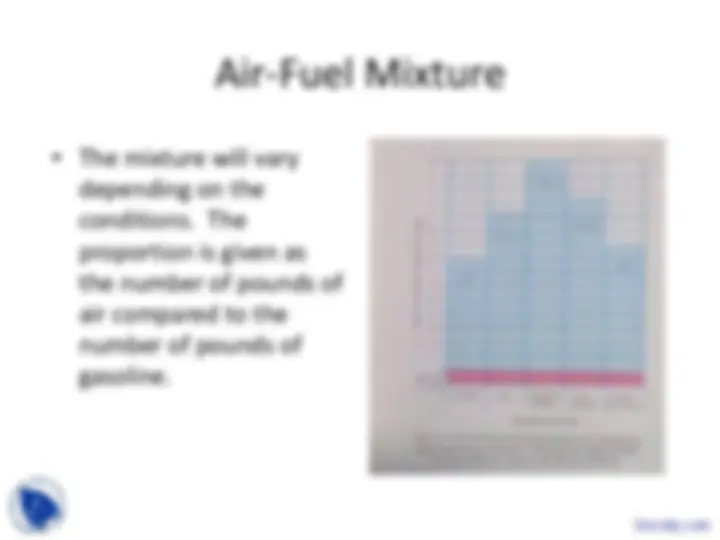
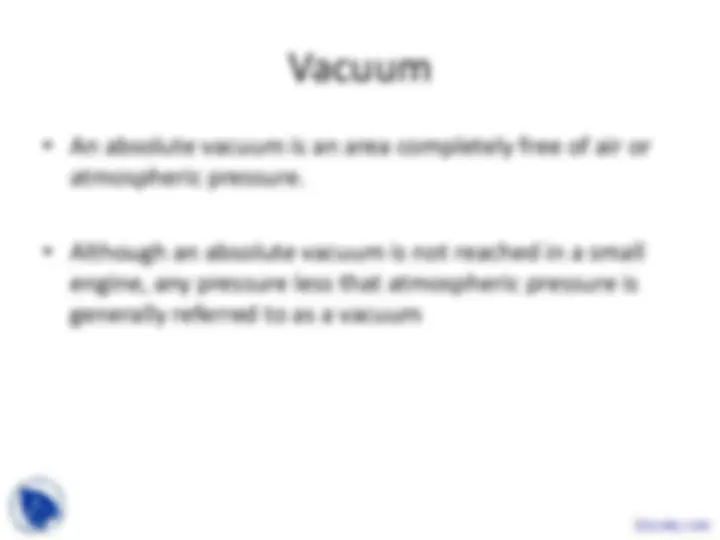
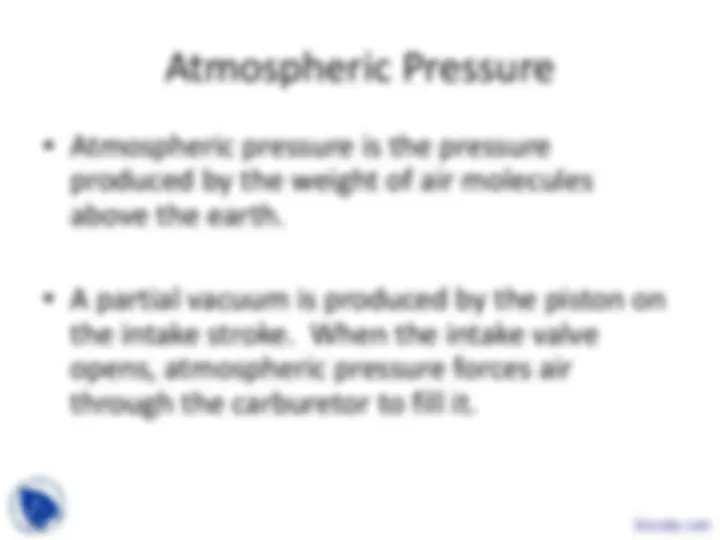
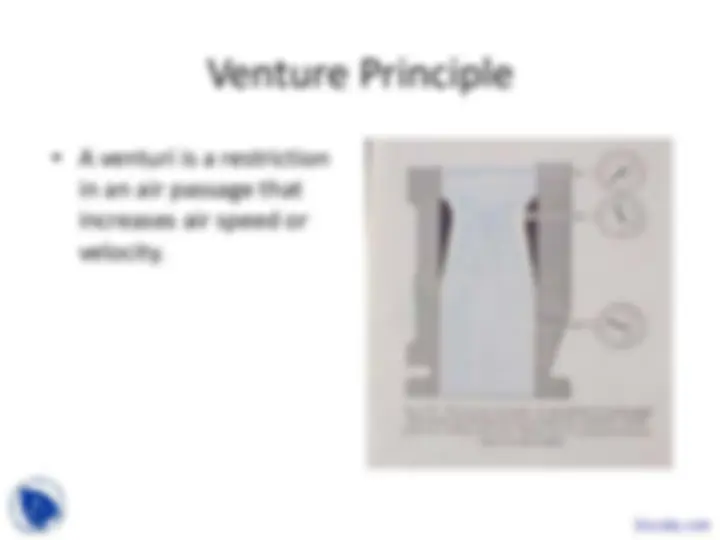
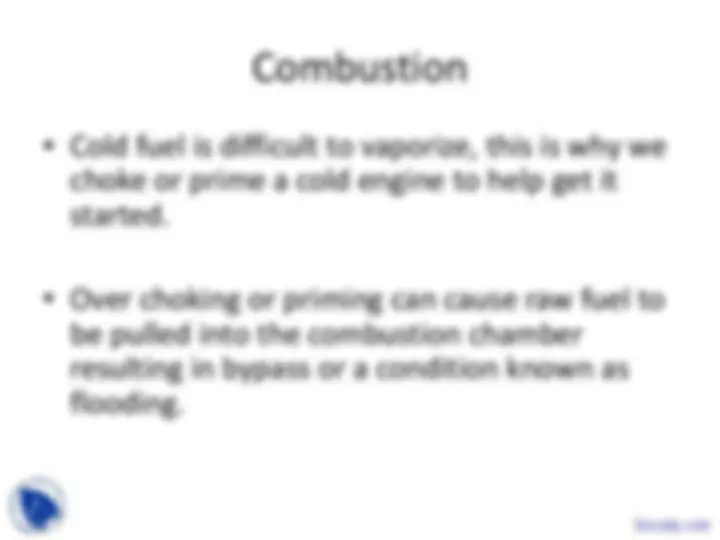
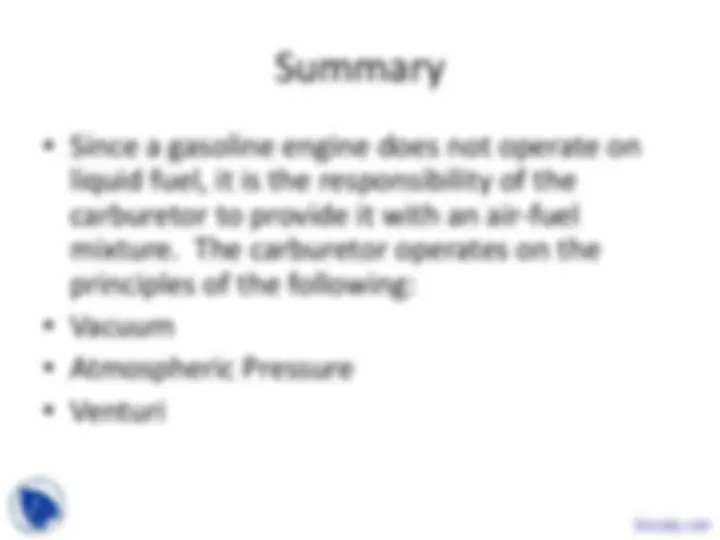


Study with the several resources on Docsity

Earn points by helping other students or get them with a premium plan


Prepare for your exams
Study with the several resources on Docsity

Earn points to download
Earn points by helping other students or get them with a premium plan
Community
Ask the community for help and clear up your study doubts
Discover the best universities in your country according to Docsity users
Free resources
Download our free guides on studying techniques, anxiety management strategies, and thesis advice from Docsity tutors
An in-depth explanation of carburetion in small engines, including the principles of operation, key terms, and how the air-fuel mixture is created using vacuum, atmospheric pressure, and a venturi. Real-life scenarios are used to illustrate the importance of this system.
Typology: Slides
1 / 19

This page cannot be seen from the preview
Don't miss anything!












It’s spring, and you get you mower out of the garage to give the lawn that first grooming. The gas tank still has gas in it so you try to fire it up. You crank the engine several times but nothing happens. What is wrong with this mower that worked last year?